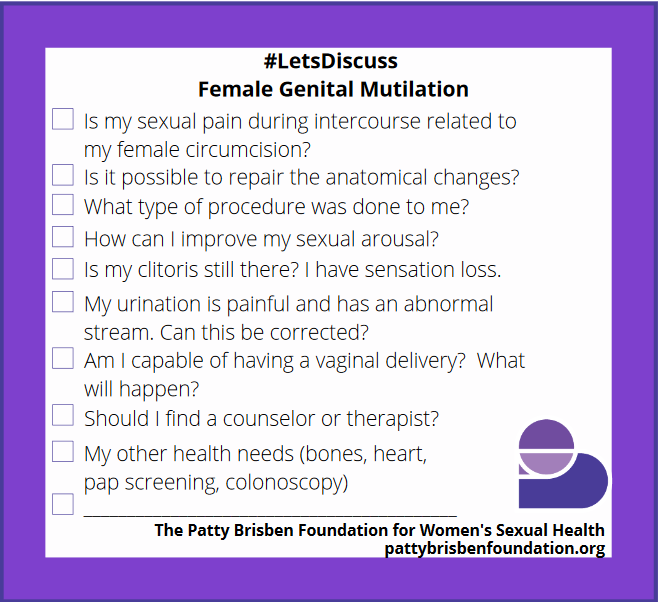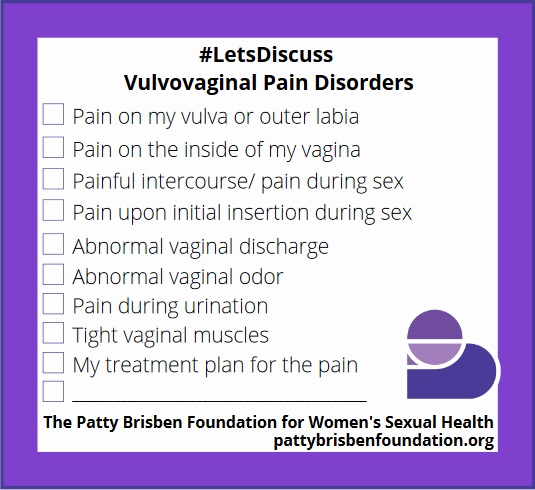“Each woman’s vulva is unique in size, shape, colour and appearance. It’s normal for the left and right sides of the vulva to be different in shape and size, especially the…”.1
Umbrella
What may the Vulva Umbrella include?
Depending on the Source (DotS) this Umbrella may include:
- Genitals
- Vulva/Vulval/Vulvar Discomfort/Pain
- Vulva/Vulval/Vulvar Skin Conditions
- Vulvovaginal Discomfort/Pain
- “Down Below/There”
- “Feminine Pain”
- “Lady Parts”
- “Private Parts”
- “Privates”
- “Women’s Bits”
Vulva and Vagina
What is the difference between the vulva and the vagina?
In Vulva and Vagina: What Is the Difference Between Your Vulva and Vagina? [+ Image] the JH note:
Vulva
What are parts of the vulva?
In Vulva and Vagina: What Is the Difference Between Your Vulva and Vagina? [+ Image] the JH explain:
- the area covered with pubic hair (mons pubis)
- the outer lips, which are covered with pubic hair (labia majora)
- the inner lips, which are not covered with pubic hair (labia minora)
- the clitoris and its hood
- the area around your vaginal and urinary openings (vestibule)
- the urinary opening (where wee comes out)
- the vaginal opening
- the area of skin between your vagina and anus (perineum)”.3
Different Differences
Are vulva one-size-fits-all?
Vulva are different. In Vulva and Vagina: What’s Normal? Appearance the JH elaborate on:
 “Each woman’s vulva is unique in size, shape, colour and appearance. It’s normal for the left and right sides of the vulva to be different in shape and size, especially the labia minora. Many images you see online are heavily edited to make the vulva look symmetrical and childlike”.4
“Each woman’s vulva is unique in size, shape, colour and appearance. It’s normal for the left and right sides of the vulva to be different in shape and size, especially the labia minora. Many images you see online are heavily edited to make the vulva look symmetrical and childlike”.4In What’s Normal: What Is Normal Vulval & Vaginal Anatomy? the (Australian) Caredownthere.com.au elaborate on:
If everything is working well down there, then it must be normal! So try not to worry about your vulval size or shape: if it works for you, who cares what anyone else thinks?”5
Vulval Problems
Can vulval problems be skin problems?
In Essential Information: Some Facts About the Vulva – Where Do Vulval Problems Belong Medically? [+ Image] Caredownthere.com explain:
Female Genital Mutilation
What is female genital mutilation (FGM)?
In International Day of Zero Tolerance for Female Genital Mutilation, 6 February: Ending Female Genital Mutilation By 2030 the United Nations’ definition is:
In Female Genital Mutilation (FGM): Overview the (United Kingdom) NHS explain:
It’s also known as female circumcision or cutting, and by other terms, such as Sunna, gudniin, halalays, tahur, megrez and khitan, among others”.8
How common is FGM?
In Female Genital Mutilation: How Prevalent Is FGM? UNICEF note:
“While the exact number of girls and women to have undergone FGM worldwide remains unknown, at least 230 million girls and women from 31 countries across three continents have been subjected to the practice”.9
In Female Genital Mutilation: Who Is At Risk?, dated 05 February 2024, the World Health Organization also note:
“FGM is mostly carried out on young girls between infancy and adolescence, and occasionally on adult women. According to available data from 30 countries where FGM is practiced in the western, eastern, and north-eastern regions of Africa, and some countries in the Middle East and Asia, more than 200 million girls and women alive today have been subjected to the practice with more than 3 million girls estimated to be at risk of FGM annually. FGM is therefore of global concern”.10
Mirror, Mirror
How can women detect any changes in the appearance of their vulva?
The JH explain:
Labia Library
What is the Labia Library?
In the Labia Library the (Australian) Women’s Health Victoria elaborate on:
Vulval Clinics
What are specialist vulval clinics?
DotC (Depending on the Country) there may be specialist vulval clinics with gynecologists, dermatologists, physiotherapists and other staff specializing in vulval conditions. These clinics may be called:
- Genito-Urinary Medicine Clinics
- Multidisciplinary Vulva/Vulval/Vulvar Clinics
- Vulva/Vulval/Vulvar Clinics
- Vulvovaginal Clinics
Health Care Provider
What if I am worried about something down there?
If you are worried about something – anything – down there, it may be in your best interest to choose to talk to your health care provider about this. The JH explain:
“If you are worried about the smell, or have symptoms such as itching, burning, irritation, soreness, painful sex or pain when you wee, see your doctor”.13
Health Topics A-Z
Where may I find Health Topics A-Z related to Vulva?
In Health Topics A-Z you may find:
Links
Where may I find Links related to Vulva?
Your Country may have Links similar to:
Links
This Links List to third party websites is neither comprehensive nor exhaustive. Inclusion on this Links List does not imply endorsement or recommendation. Non-inclusion on this Links List does not imply non-endorsement or non-recommendation. Third party websites are not under the control of Meno Martha International Menopause Directory. Third party websites may contain explicit medical images and/or sexual references. Please read Meno Martha International Menopause Directory’s Links Policy before proceeding to a Link. Please contact Webmaster if you experience a problem with a Link.New or Updated
- Boxers, Briefs and Bacterial Vaginosis: How Your Underwear Can Affect Your Health [07 March 2024]
- Vaginal and Vulval Pain: Know the Different Causes and When To Seek Help [18 January 2024]
- Videos & Podcasts: Videos – Vulvar Diseases, Overview for Aging Women [June 2024]
- Vulvar Cancer: What Patients Should Know About [17 June 2024]
- Vulval Self-Checks: How To Get To Know Your Vulva and Why You Should [17 January 2024]
- Webinars: Previous – Sexual Dysfunctions, Update on Gynae Cancers and Management [18 June 2024]
- 9 Tips To Keep Your Vagina and Vulva Healthy
- ANZ Vulvovaginal Society: Patient Information [Australian and New Zealand]
- BMS TV: Urogenital Atrophy
- Boxers, Briefs and Bacterial Vaginosis: How Your Underwear Can Affect Your Health
- British Association of Dermatologists: Patient Information Leaflets
- British Society for the Study of Vulval Disease: Patient
- Caredownthere.com.au [Care Down There]
- Dr. Stephanie Faubion – Genitourinary Syndrome of Menopause
- Essential Information: Caring for Your Skin Down There
- Essential Information: See Your Doctor If
- Essential Information: Some Facts About the Vulva [+ Image]
- Everything You Need To Know About Your Labia
- FAQS: Disorders of the Vulva: Common Causes of Vulvar Pain, Burning, and Itching
- FAQs: Vaginal Rejuvenation, Labiaplasty, and Other Female Genital Cosmetic Surgery
- FAQs: Vulvovaginal Health
- Female Genital Mutilation
- Female Genital Mutilation
- Female Genital Mutilation (FGM) [+ Videos]
- Female Genital Mutilation (FGM): Getting Help and Support [United Kingdom]
- Female Genital Mutilation or Cutting
- Forward [Foundation for Women’s Health Research and Development, United Kingdom]
- Foundation for Women’s Cancer [United States]
- Genital Herpes [Multiply Languages]
- Glossary
- Gynaecological Cancers
- Gynaecological Cancers – Vaginal and Vulval
- Gynecologic Cancers
- HOPE [Health Organization for Pudendal Education]
- Hormone Replacement Therapy (HRT): Vaginal Oestrogen
- International Day of Zero Tolerance for Female Genital Mutilation, 6 February: 2024 Theme: Her Voice. Her Future

- International Society for Sexual Medicine: Public
- International Society for Sexual Medicine: Sexual Health Topics
- International Society for the Study of Vulvovaginal Diseases: Patient Handouts
- International Society for the Study of Women’s Sexual Health: Find A Provider
- Labialibrary.org.au [Labia Library]
- Let’s Talk About Vulvas
- Lichen Sclerosus
- Lsvcukawareness.co.uk [Lichen Sclerosus & Vulval Cancer UK Awareness]
- Lubricant Alternatives: What To Use and What To Avoid
- Managing Common Vulval Skin Conditions
- Medical Advice: Genital Herpes
 Medical Advice: Genital Warts
Medical Advice: Genital Warts- Medical Advice: Lichen Sclerosus
- Medical Advice: Medical Exams
- Medical Advice: Psoriasis
- Medical Advice: Treatment
- Medical Advice: Vulval Cancer
- Medical Advice: Vulval Eczema
- Medical Advice: Vulval Pain
- Menopause, Skin and Common Dermatosis. Part 3: Genital Disorders
- Menopause: Understanding the Changes and Finding Relief | Dr Susan Davis | The Proof Podcast EP 256
- Myths and Suggestions: Myths About Skin Disease and the Vulva
- National Vulvodynia Association: For Patients: How NVA Can Help You
- Navigating Menopause: Expert Insights and Solutions | Dr Susan Davis | The Proof Podcast EP 245
 Patty Brisben Foundation for Women’s Sexual Health
Patty Brisben Foundation for Women’s Sexual Health- Patty Brisben Foundation for Women’s Sexual Health: Guide To Sexual Health Providers
- Pelvic Exam
- Prosalya [Prosayla is proudly supported by The International Society for the Study of Women’s Sexual Health (ISSWSH)]
- Pudendal Neuralgia
- Royal College of Obstetricians & Gynaecologists [United Kingdom]
- Self-Help Tips
- Sexual Problems and Menopause
- Small Clusters of Lumps on My Labia: What Are They? — Ask Dr Jean
- The Clitoris – A Brief History
- Thinking About Cosmetic Surgery?
- Vaginal and Vulval Pain: Know the Different Causes and When To Seek Help
- Vaginal Dryness
- Vaginal and Vulvar Cancers
- Vestibulodynia (Formerly Vulval Vestibulitis)
- Video Series-2022: Discussing Sexual Health Concerns With Your Health Care Professional
- Videos & Podcasts: Videos – Vulvar Diseases, Overview for Aging Women
- Vulva and Vagina
- Vulval Self Checks
- Vulvar Awareness Day [18 September]
- Vulvar Awareness Campaign 2023-2024: HPV Related Vulvar and Vaginal Diseases

- Vulvar Cancer
- Vulvar Cancer
- Vulvar Cancer: What Patients Should Know About
- Vulva and Vagina
- Vulval Cancer
- Vulval Cancer
- Vulval Irritation
- Vulval Pain
- Vulval Pain Conditions
- Vulval Pain Society
 Vulval Self-Checks: How To Get To Know Your Vulva and Why You Should
Vulval Self-Checks: How To Get To Know Your Vulva and Why You Should- Vulval Self-Examination
- Vulval and Vaginal Conditions
- Vulvar Anatomy [+ Images]
- Vulvar Cancer
- Vulvar Cancer
- Vulvar Cancer–Patient Version [+ Image]
- Vulvovaginal Pain Log
- Vulvovaginitis – Overview
- Webinars: Previous – Pay Attention on Your Way In! The Vulva Is An Important Organ Too
- Webinars: Previous – Sexual Dysfunctions, Update on Gynae Cancers and Management
- What Is the Vulva?
- What You See In the Media
- What’s Normal: Lumps and Bumps
- What’s Normal: What Is Normal Vulval & Vaginal Anatomy?
Sources
Where may I find the Sources quoted?
You may find the Sources quoted at:
Sources
- Vulva and Vagina: What’s Normal? Appearance. Last Updated: 10 April 2024 | Last Reviewed: 26 April 2023. Jean Hailes for Women’s Health https://www.jeanhailes.org.au/health-a-z/vulva-vagina/vulva-and-vagina Accessed: 04 July 2024
- Vulva and Vagina: What Is the Difference Between Your Vulva and Vagina? Last Updated: 10 April 2024 | Last Reviewed: 26 April 2023. Jean Hailes for Women’s Health https://www.jeanhailes.org.au/health-a-z/vulva-vagina/vulva-and-vagina Accessed: 04 July 2024
- Vulva and Vagina: What Is the Difference Between Your Vulva and Vagina? Last Updated: 10 April 2024 | Last Reviewed: 26 April 2023. Jean Hailes for Women’s Health https://www.jeanhailes.org.au/health-a-z/vulva-vagina/vulva-and-vagina Accessed: 04 July 2024
- Vulva and Vagina: What’s Normal? Appearance. Last Updated: 10 April 2024 | Last Reviewed: 26 April 2023. Jean Hailes for Women’s Health https://www.jeanhailes.org.au/health-a-z/vulva-vagina/vulva-and-vagina Accessed: 04 July 2024
- What’s Normal: What Is Normal Vulval & Vaginal Anatomy? Caredownthere.com.au https://www.caredownthere.com.au/_pages/normal.html Accessed: 04 July 2024
- Essential Information: Some Facts About the Vulva – Where Do Vulval Problems Belong Medically? Caredownthere.com.au https://www.caredownthere.com.au/_pages/information_vulva.html Accessed: 04 July 2024
- International Day of Zero Tolerance for Female Genital Mutilation, 6 February: Ending Female Genital Mutilation By 2030. United Nations. https://www.un.org/en/observances/female-genital-mutilation-day Accessed: 04 July 2024
- Female Genital Mutilation (FGM) Overview. Page Last Reviewed: 27 September 2022. NHS https://www.nhs.uk/conditions/female-genital-mutilation-fgm/ Accessed: 04 July 2024
- Female Genital Mutilation: How Prevalent Is FGM? UNICEF https://www.unicef.org/protection/female-genital-mutilation Accessed: 04 July 2024
- Female Genital Mutilation: Who Is At Risk? Updated: 05 February 2024. World Health Organization https://www.who.int/en/news-room/fact-sheets/detail/female-genital-mutilation Accessed: 04 July 2024
- Vulva and Vagina: What’s Normal? Appearance. Last Updated: 10 April 2024 | Last Reviewed: 26 April 2023. Jean Hailes for Women’s Health https://www.jeanhailes.org.au/health-a-z/vulva-vagina/vulva-and-vagina Accessed: 04 July 2024
- Labia Library. Women’s Health Victoria http://www.labialibrary.org.au/ Accessed: 04 July 2024
- Vulva and Vagina: What’s Normal? Smell. Last Updated: 10 April 2024 | Last Reviewed: 26 April 2023. Jean Hailes for Women’s Health https://www.jeanhailes.org.au/health-a-z/vulva-vagina/vulva-and-vagina Accessed: 04 July 2024



